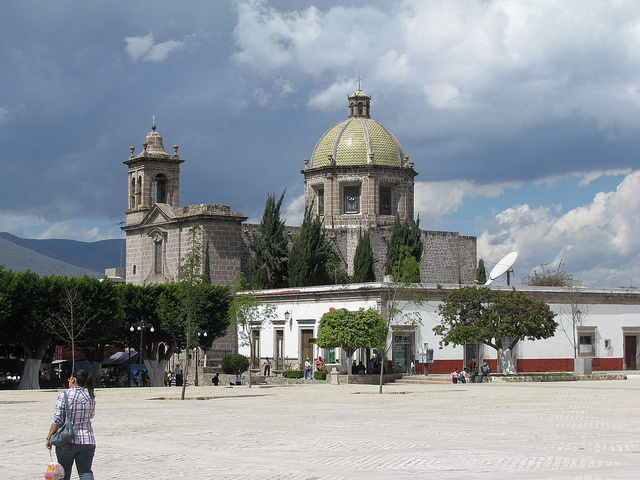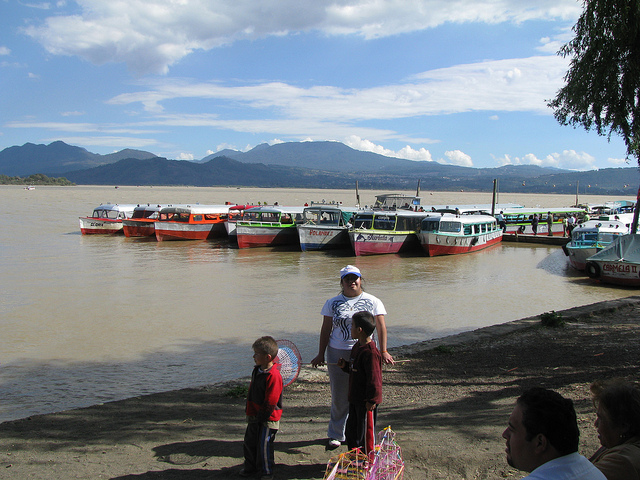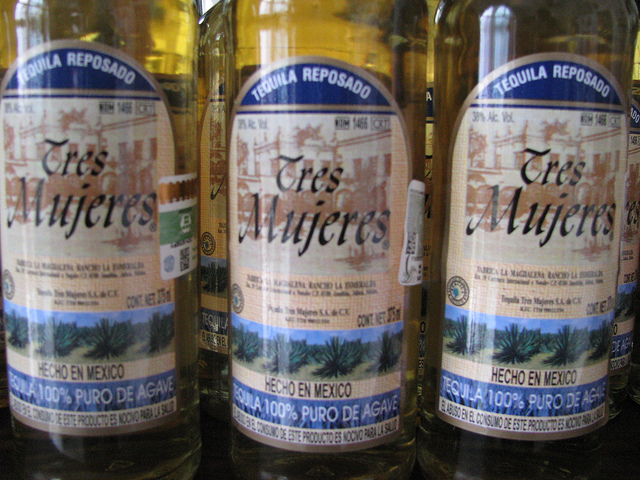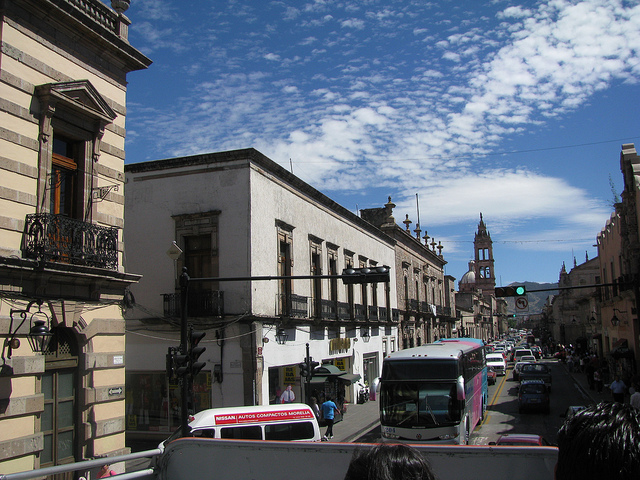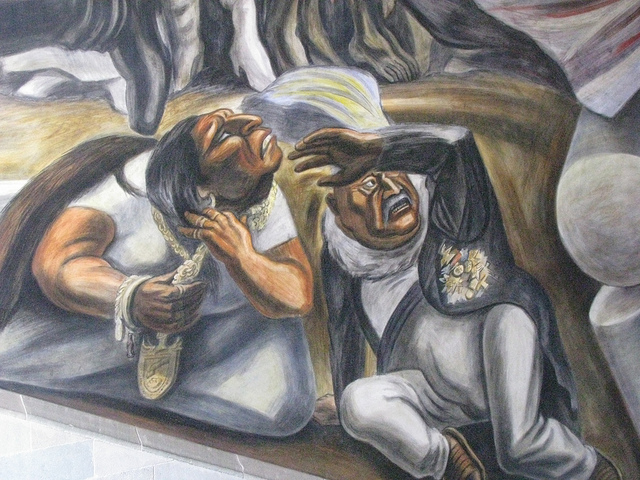Rodrigo explained that Cuitzeo, baesd on its history and architecture, is one of Mexico’s “pueblos magicos”, or “magic villages”, a special designation awarded to select towns across the country that are renowned for their architectural and historic heritage. The houses in Cuitzeo were uniformly pained in white with a reddish brown colour at the bottom. This is apparently done to honour the Virgen de la Salud.

Entrance to the Monastery Santa Maria Magdalena
From the main square we had a great view of three surrounding churches: the Chapel to the Immaculate Conception from the 18th century, the Church of the Virgin of the Dolores, and the Augustinian Monastery Santa Maria Magdalena. A large arcaded interior courtyard is at the heart of this former monastery, framed by walkways that feature medieval-looking frescoes. Some areas are adorned by wall paintings whose condition has deteriorated substantially in certain parts. Many rooms were leading off the central walkways, but the rooms I saw were essentially empty and some of them featured very high vaulted ceilings. 19th century horse-drawn carriages were parked here as a memento of travel in an earlier time.

Cloister of the Monastery Santa Maria Magdalena
The cloister of the monastery features Roman style arches; a cistern collects rainwater. The monastery had very long medieval-looking hallways with small windows and stone window seats for the monks who could sit down and converse at these windows. Construction on the monastery started in 1534, but the last monks moved out of here in 1873. Since then the former monastery of Santa Maria Magdalena has been turned into a museum and exhibition space.

Very old frescoes
We also saw the kitchen and the dining room of the monastery which were now large empty rooms with very high ceilings. The “Sala Capítula”, or chapter room, is the most important meeting space at the monastery and is sometimes used for concerts or special events. It holds gorgeous frescoes, but parts of the paintings have vanished due to deterioration. Rodgrigo showed me a special vantage point into the church that was used by monks who had a mobility problem. They could view mass from high up and did not have to incur the inconvenience of walking downstairs on to the church’s main floor.

A toilet from the 16th century
Even the private life of the monks reveals itself at the Monastery of Santa Maria Magdalena: a washroom with six wooden stalls was where the monks would take care of business. Apparently the wood in the gravity-operated toilets still dates from the 16th century. Small holes in the wall would work as urinals and probably required fairly good aim. Life was definitely austere in those times. Then Rodrigo showed me a dark cell with a heavy door and big lock: this was the punishment cell. Even monks were sometimes in need of punishment for misbehaving.

One of the many long hallways at the monastery
Finally we walked into the choir of the monastery’s church from where we had an elevated view down into the nave. The wooden choir stalls looked very uncomfortable and date back to the 1600s. The organ originally came from Germany and its keyboard was manufactured in 1669. This ancient instrument has of course been upgraded and today has an electric pump to produce its majestic organ music.

The German organ at the Monastery Santa Maria Magdalena
Towards 2 pm, just as it started to rain, we had finished our tour of the monastery of Santa Maria Magdalena. As we drove back south towards Morelia, the heavens were really opening up and it was coming down in sheets. Back in town we stopped at a restaurant called El Portón where I enjoyed a nice tortilla soup and guacamole. Then it was time to say goodbye to Rodrigo who had so expertly guided me during these three days in Morelia. I headed back on the ETN bus to Guadalajara and arrived around 8 pm, ready to pack my bags for my return to Toronto early tomorrow morning. In my head I replayed so many of the images that I had seen in these past 13 days and realized that colonial Mexico with its history, its gorgeous landscapes and impressive architecture will always charm me and call me back again.

Mexico – always a very colourful experience
